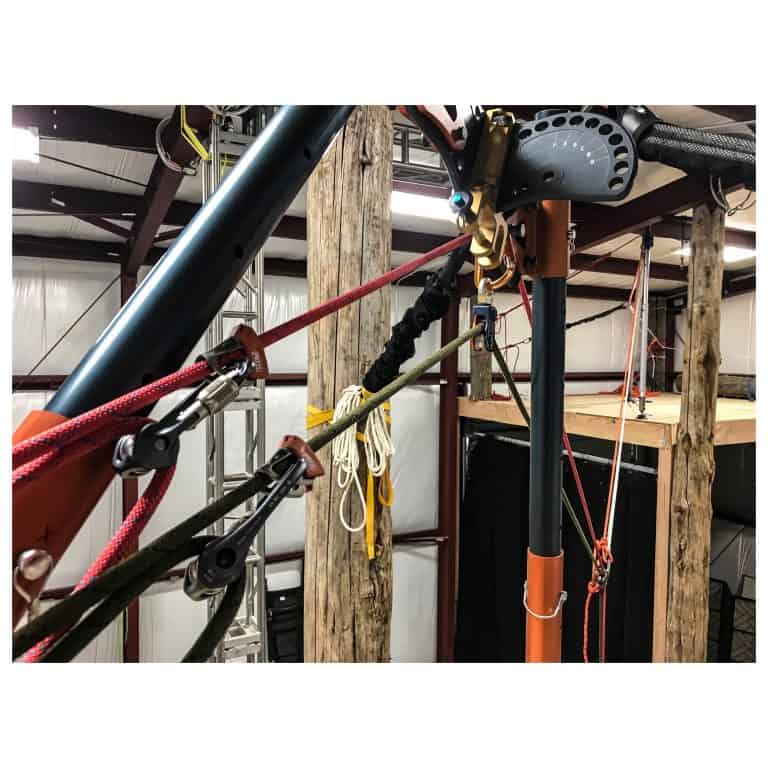Petzl Tibloc: A Mechanical Prusik Revolutionizing Rope Systems
The Petzl Tibloc is a compact, lightweight mechanical rope-grabbing device often regarded as a mechanical Prusik. Its efficiency, ease of use, and versatility make it a valuable tool for rescue professionals, climbers, and technical riggers. This article explores how the Tibloc functions, its applications in mechanical advantage (MA) systems, and how it compares to traditional Prusik hitches.
What Is the Petzl Tibloc?
The Petzl Tibloc is a toothed cam device designed to grip a rope when loaded. Unlike a traditional Prusik hitch, which relies on friction from a cord loop, the Tibloc uses its cam teeth to create a secure hold. This mechanical design offers significant advantages in terms of efficiency and ease of operation.
- Weight: At only 35 grams, it is incredibly lightweight, making it ideal for rescue teams and climbers who prioritize minimal gear.
- Size: Its compact design allows it to fit easily into a small kit or pocket.
- Materials: Made of durable stainless steel, the Tibloc is built to withstand the rigors of rescue operations and climbing.
How the Petzl Tibloc Works
- Attachment: The Tibloc is placed on the rope and secured using a carabiner.
- Engagement: When load is applied, the toothed cam grips the rope securely.
- Release: The device disengages easily when unloaded, allowing the rope to slide freely.
The simplicity of its operation mirrors that of a Prusik hitch, but with the added benefit of mechanical efficiency.
Applications of the Petzl Tibloc
- Mechanical Advantage Systems:
- Perfect for progress capture in hauling systems such as 3:1 Z-Drags or more complex configurations.
- Reduces friction and improves efficiency compared to tandem Prusiks.
- Ascent and Descent:
- Acts as a reliable ascender for emergency rope climbs.
- Can be used in conjunction with another device (e.g., a handled ascender) for efficient rope progression.
- Belay and Backup Systems:
- Adds redundancy to belay systems by acting as a secondary rope grab.
- Emergency Situations:
- Ideal for improvised rescues where speed and reliability are critical.
Comparing the Tibloc to a Prusik Hitch
The Petzl Tibloc is often described as a “mechanical Prusik” due to its similar functionality, but there are notable differences in performance and practicality.
| Feature | Petzl Tibloc | Prusik Hitch |
|---|---|---|
| Weight | Extremely lightweight (35g) | Requires cord loop (slightly heavier) |
| Setup Time | Quick and intuitive | Requires careful tying |
| Friction | Minimal resistance | Higher resistance, especially tandem |
| Ease of Use | One-handed operation | Requires manual adjustment |
| Versatility | Limited to certain rope sizes (8-11mm) | Works on a variety of ropes |
| Cost | Higher cost | Virtually free if cord is available |
Efficiency in Mechanical Advantage Systems
One of the most significant advantages of the Tibloc is its efficiency in MA systems. Unlike Prusik hitches, which rely on friction and can introduce 10-15% additional resistance, the Tibloc minimizes energy loss. In a 3:1 system, for example:
- The Tibloc allows smoother progress capture, reducing the effort required to raise a load.
- Its mechanical engagement ensures consistent performance regardless of rope conditions (e.g., wet, dirty, or frozen ropes).
Limitations of the Petzl Tibloc
While the Tibloc excels in many scenarios, it does have some limitations:
- Rope Compatibility: Designed for ropes between 8-11 mm, limiting its versatility compared to a Prusik hitch.
- Rope Wear: The toothed cam can damage ropes under high tension, especially if the rope is not properly tensioned during setup.
- Cost: More expensive than a simple cord loop used for a Prusik hitch.
These considerations are critical for users to weigh when deciding between a Tibloc and traditional methods.
Practical Tips for Using the Tibloc
- Use a Compatible Carabiner:
- Always pair the Tibloc with an oval-shaped carabiner to ensure optimal performance and prevent misalignment.
- Avoid Overloading:
- Excessive force can damage the rope. Ensure the device is properly positioned and tensioned before applying load.
- Inspect Regularly:
- Check the teeth and cam mechanism for wear or damage after each use to maintain safety and reliability.
Real-World Use Cases
- Mountain Rescue:
- Lightweight gear like the Tibloc is ideal for extended missions where every ounce counts.
- Its efficiency in MA systems allows teams to haul or lower loads with minimal effort.
- Wilderness Operations:
- Compact and reliable, the Tibloc performs well in remote environments where simplicity and reliability are paramount.
- Industrial Rescue:
- The Tibloc integrates seamlessly with other devices, such as the CMC Clutch, in complex industrial setups.
Conclusion
The Petzl Tibloc bridges the gap between traditional friction hitches and modern mechanical devices. Its lightweight design, efficiency, and ease of use make it an excellent choice for rescue professionals, climbers, and riggers seeking a reliable alternative to Prusik hitches.
While it cannot fully replace the versatility and adaptability of the Prusik, the Tibloc shines in scenarios where efficiency and simplicity are critical. Understanding its strengths and limitations ensures users can incorporate it effectively into their systems, whether for hauling, lowering, or ascending.
For those looking to optimize their systems, the Tibloc is a standout tool that deserves a place in every rescuer’s kit.
Reference Links for Further Reading
- Mechanical Ascenders for Rope Rescue Systems
- CMC Capto vs. Prusik Comparison
- Understanding Friction in Mechanical Advantage Systems
- Anchors, TTRS, and Hauling Systems
Peace on your Days
Lance










